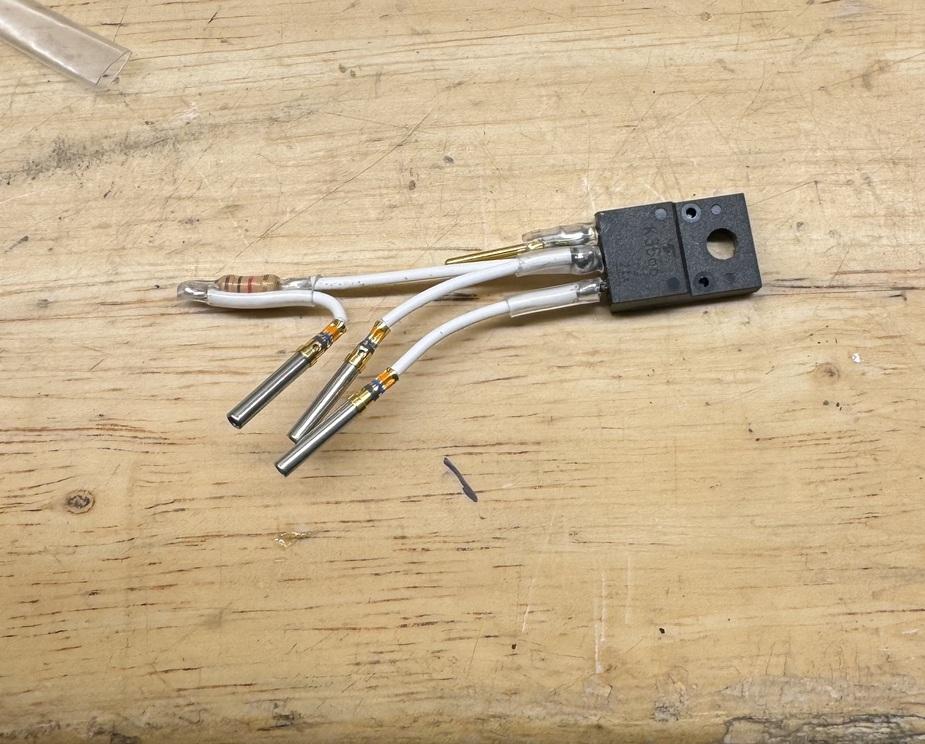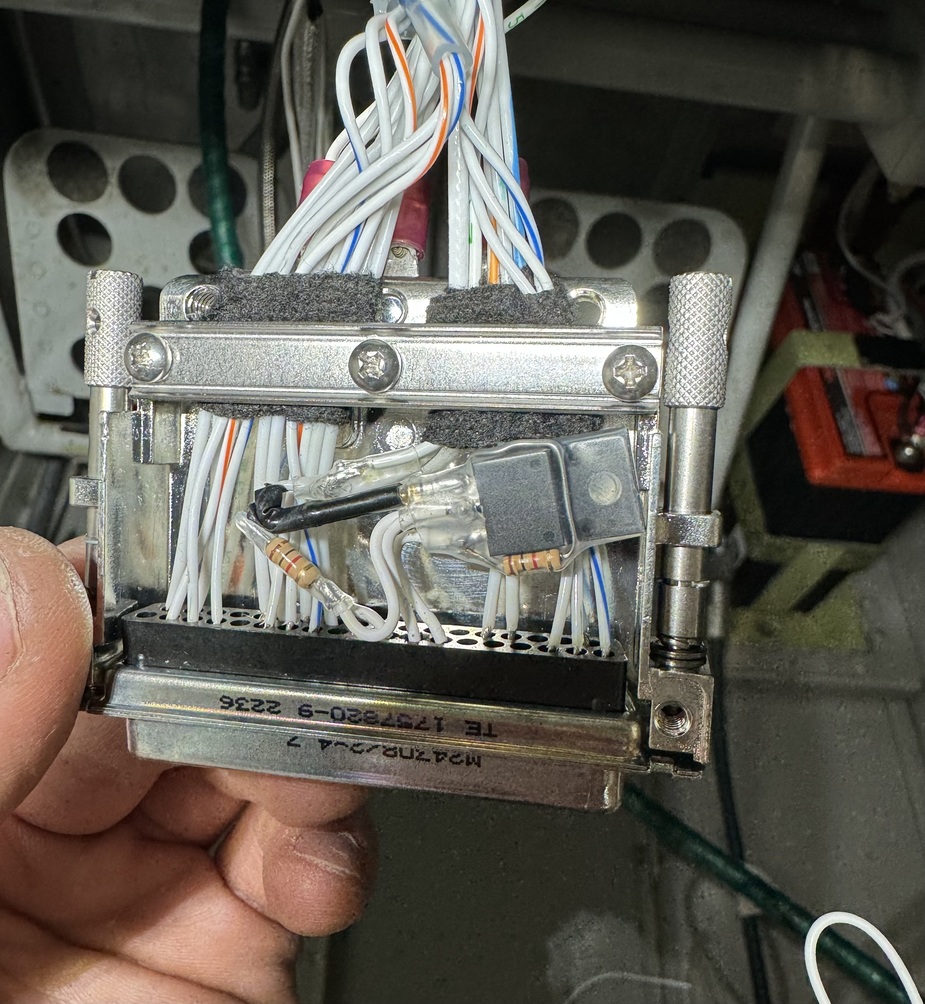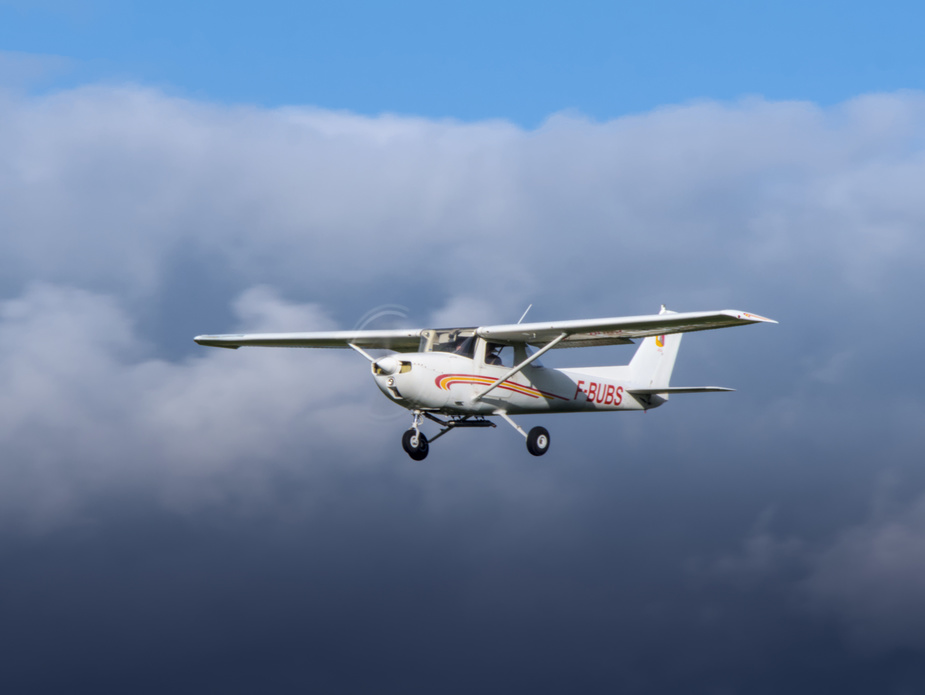Well I fixed the RPM output. In case some poor soul is googling for this specific problem one day in the future, this may help…
My EI is a Lightspeed Plasma 2, it’s over 20 years old and it seems the tach output can be configured in various different ways. The G3X installation manual says that the Plasma 2 unit should just connect directly to the RPM input on a GEA24B, which is what I did but there was no RPM registering.
Suspicious that the EI unit had a faulty tach output, I disconnected it from the GEA24B and scoped the output… sure enough the pulse was there, about 5.6V peak and 1.6mS period. The Garmin still wouldn’t register this though, so I figured the voltage swing was too low. I discovered previously that the GEA24B seems to want a full 12V swing to reliably register the user configurable discrete inputs, so I figured it may be the same for the tach input.
The easiest way to increase the voltage swing was with an N channel mosfet. I found one in the hangar, it’s massively overkill but still fits inside the D sub connector housing. Of course I am using a pull up resistor so the RPM signal is now normally high with a negative pulse, but this shouldn’t matter as the GEA24B should just be registering either the rising or falling edge of the pulse.
Sure enough, this worked and now I have working RPM :)


That’s amazing work. The number of people in avionics who know what a transistor is has increased from 0 to 1.
A few manoeuvers to keep warm ! Off-field landings (with go-arounds around 50ft…), engine failures etc.
Landed 4min before night time (ample time ! just kidding, I’d have stayed well away from this were it not for the instructor)
Also did a bit of plane-spotting while waiting for the aircraft to be brought back by the person before :

This convinced me that I need 1) a tripod and 2) a telephoto lens. (Double stabilization does not cut it when taking hand-held shots at 1/100s, especially on a moving target)
@maxbc don’t waste your money on a tripod. With a telephoto lens or the long end of a zoom you would be surprised how little wind is needed to give it the shakes. Unless you have a Moy head and legs like I have here but you need to be really strong to lift the head. It’s normally a 2 person job.
You would possibly do better with a heavy weight bean bag and something to raise it into the position you need it, or some g clamps to attach the camera to some stable metal structure.
If you do decide on a tripod make sure it is sheltered from the wind and use digital stabilisation as well.
I feel like stabilization is making things worse when trying to follow a moving target. I’ll have to see how it plays out with a fluid head, but it’s certainly the case for hand-held (it introduces some distracting movement in videos).
I have to use fairly low speeds to have good prop rendering (a sharp and frozen prop appears static and is not pretty). At most 1/200, more likely 1/160 or 1/100.
Previous threads on shutter speeds
1/250 is normally best for formation photos, for the “ideal” prop picture.
@maxbc sorry I was thinking more of moving images. A still from a tripod may be better without digital stabilisation. The faster the shutter speed the sharper the image but it will stop the prop.
Are you thinking of the old motor racing trick of panning with the image, in which case you will need to practice with a fluid head otherwise you can easily fall over🙂
If you are thinking of letting the aircraft enter frame and then shoot, you might consider using a cable release.
You might also consider doing 2 or three shots at different exposures then use one of the photo editing software to get a darker sky and the aircraft exposed correctly. So often the sky gets bleached out otherwise. With a moving object this tends to work better than trying to use a ND grad filter on a moving object because the grad can often be seen.
Thanks for the advice !
The issue is that I want to see a blurry prop, so I need a ~1/100 speed. The aircraft is moving as well, so I’ll try to pan slowly and closely follow it (even if it makes the sky somewhat blurry), hence the fluid head. It’s also useful for e.g. landing videos, and can be used as a regular tripod by making it stiffer.
For multi-exposures, I’m not a pro yet but I’ll be sure to check it out. For this picture I think the sky vs aircraft exposure is ok (and there is no saturation, even in the final image). I used gradient just to add somewhat of a dramatic effect to the bottom part of the sky.
1/100 will nearly remove the prop. 1/80 usually removes a 3B prop at 2400rpm completely. 1/250 is for the “best artistic effect”. Remember that only proper cameras (DSLRs or video cameras with a real shutter) do this right. Phones are basically useless. It’s been posted – including videos.
Always shoot “down sun” for the easiest light conditions i.e. the subject aircraft usually north of the camera aircraft (“camera ship” if you are trying to impress  ) in northern hemisphere.
) in northern hemisphere.
With a phone you can get quite presentable pics but the prop usually looks pretty crap so needs to be retouched. This was probably a £1000+ Iphone
